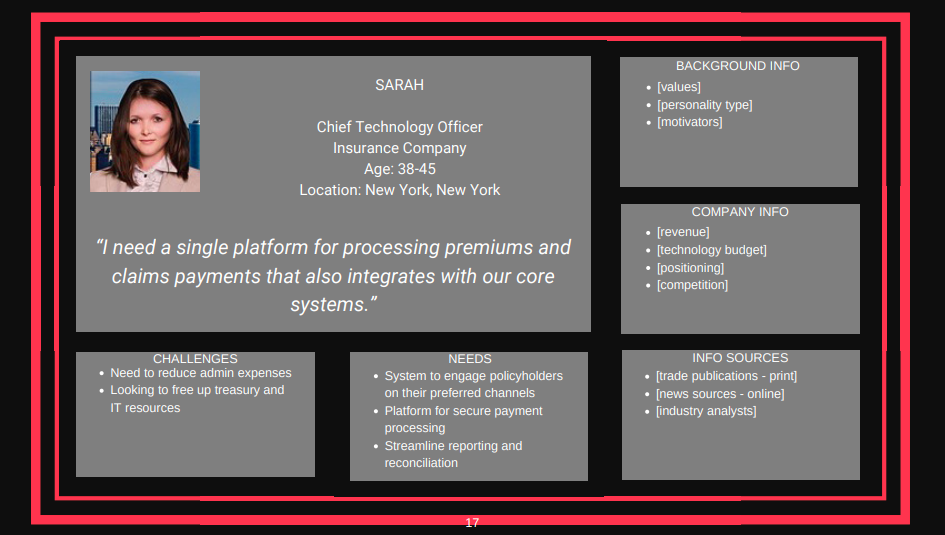Last Updated on August 3, 2023 by admin
In Part I, we laid the groundwork for successful fintech startup content growth hacks. As a refresher, growth hacking is centered on the fastest ways to increase revenue. With content, we’re looking at the fastest ways to see new revenue from content marketing activities. Some of the ways to do this are to:
- Increase search impressions aka create more content. More content = more pages indexed = greater # of impressions
- Improve click-through rate by compelling clicks on your content in SERPs. Optimize search snippets (meta descriptions) and titles to “convince” people they want to click.
- Improve sales conversion rate with highly-actionable landing pages. Landing pages need great, creative copy that is also optimized for search to streamline the path from impression to click-through to sale
- Improve average order value by tailoring content for high-ticket audience personas (buyer personas).
We covered the first two strategies in Part I, and we’ll wrap up by giving insightful advice on how to create better landing pages and how to use personas to optimize content and get the biggest bang for your buck.
Fintech Startup Content to Increase Conversions
Everything we discussed in the two main sections of Content Growth Hacks for Fintech Startups Part I applies here. In short: keywords are important, but so is being interesting. When it comes to landing pages, you have limited real estate to work with and limited attention spans. You have to do a lot with a little and this requires a scientific approach with a creative edge. Conversions may not necessarily be sales conversions if you’re operating in the B2B space; however, the click is still valuable. Whether it represents a signup, contact, appointment, download or sale, clicks on landing pages matter and (if you have solid tracking implemented) ultimately equate to revenue.
There are thousands of articles on how to create excellent landing pages, so we’ve distilled the best advice down to a handful of bulleted growth hacks for fintech. The following have all been tried, tested, and proven on our own content process:
- A/B test copy, buttons, fonts, layout, and length—We put this at the top of the list as a friendly reminder that no one gets it perfect on the first try because perfect doesn’t’ exist. Always be improving. Always be testing.
- Clearly articulate benefits—Avoid describing the specific features of your product/service and instead focus on what’s in it for them (i.e. the buyer). Cover big-picture benefits and more minute perks to capture interest.
- Focus on the headline—This is one of, if not the, most important elements on the page. Remember the limited attention spans? In some cases, the headline is all you get to grab someone’s attention and persuade them to click. Ask yourself what would make you click.
- Add customer testimonials—People trust their peers when it comes to buying into a product or service. If you have customer testimonials or reviews, feature them on your landing pages. This is a great way to build trust and credibility by using your own existing customers.
- Add data—Have killer stats about how your product or service knocks it out of the park? Highlight those on landing pages. People respond well to specifics.
- Be human—This can be one of the trickiest growth hacks for fintech startups who are often offering services based on complex technology in the financial sphere. Financial jargon can be heavy and hard-to-digest so find sleek and clear-cut ways to talk about the benefits of your offering.
- Optimize calls-to-action (CTAs)—Don’t forget to include a CTA. It should be clear and direct in what you’re asking the visitor to do as well as the benefits they’ll get for doing it. Selling a service to streamline how people save money? Try “Start Saving Now”. If you’re promoting gated content on your landing page, let people know how they win for filling out the form and clicking: “Get the Top Tips Now” (or whatever your content includes). Remember, many people are browsing on their phones, so buttons, font and copy should all be legible and big enough for a finger to tap.
Target High Ticket Prospects by Knowing Who They Are
People often get buyer personas and audience personas confused. Buyer personas relate to sales goals whereas audience personas relate to your content marketing goals. Buyer personas are typically focused on the conversion stage of the marketing funnel, while audience personas are relevant throughout the entire marketing funnel (awareness, consideration, and conversion). Each plays a specific role when creating a successful strategy around growth hacks for fintech companies.
In either case, personas are research-based representations of your ideal audience(s)/buyer(s). Note, this may be – and usually is – plural, especially when it comes to audiences. There may be a specific “title” that B2B fintech startups target as a buyer, but the audience is usually broader than that.
For example, a company selling payment processing software may target a CTO or CFO, but the information they are providing via content is likely relevant to the rest of the C-suite as well. With audience personas, it’s important to consider influencers who may regularly be having conversations with your target buyer and who may ultimately impact a sale.
Both types of personas are not necessarily mutually exclusive, nor do they absolutely overlap. How these two types of personas interact will vary widely based on your business model and marketing strategy.
To figure out who your audience includes, consider the following:
- Check Google Analytics to identify key demographic information about people visiting your site (gender, age)
- Audience > Demographics > Overview
- Check Google Analytics to identify what your audience is interested in
- Audience > Interests > Affinity Categories
- Check Google Analytics to identify what devices your audience prefers
- Audience > Mobile > Overview
- Use surveys to gather information from current customers (how they heard about you, their content interests, their motivations, their decision-making process)
- Partner with your sales team to get insights about the type of people that buy from you
- Research your database – gather information from the social profiles, websites, and other online presences of the people in your database.
- Research trends, challenges, and solutions relevant to audience verticals
Using actual data to create audience personas will result in highly accurate profiles for which you can create tailored content. Personalized content is the most effective content and one of the best growth hacks for fintech companies looking to differentiate from the competition. This will also enable you to see which types of buyers you need to target to raise average order value or close bigger deals. From there, you can create custom content accordingly.
Everyone can create content, and almost all fintech startups are actively doing it. A month ago, we spoke with the content marketing strategy director who said they are “investing heavily in content”. The reality is that content—high-quality, interesting, compelling content—will be a differentiator between fintech startups that make it and those that don’t. Perhaps not the only thing. But definitely a thing. So can you hack it?
Missed Part I of Content Growth Hacks for Fintech Startups? Read it here.
BONUS: For the complete guide to fintech marketing, download the free Fintech Marketing Playbook here.





